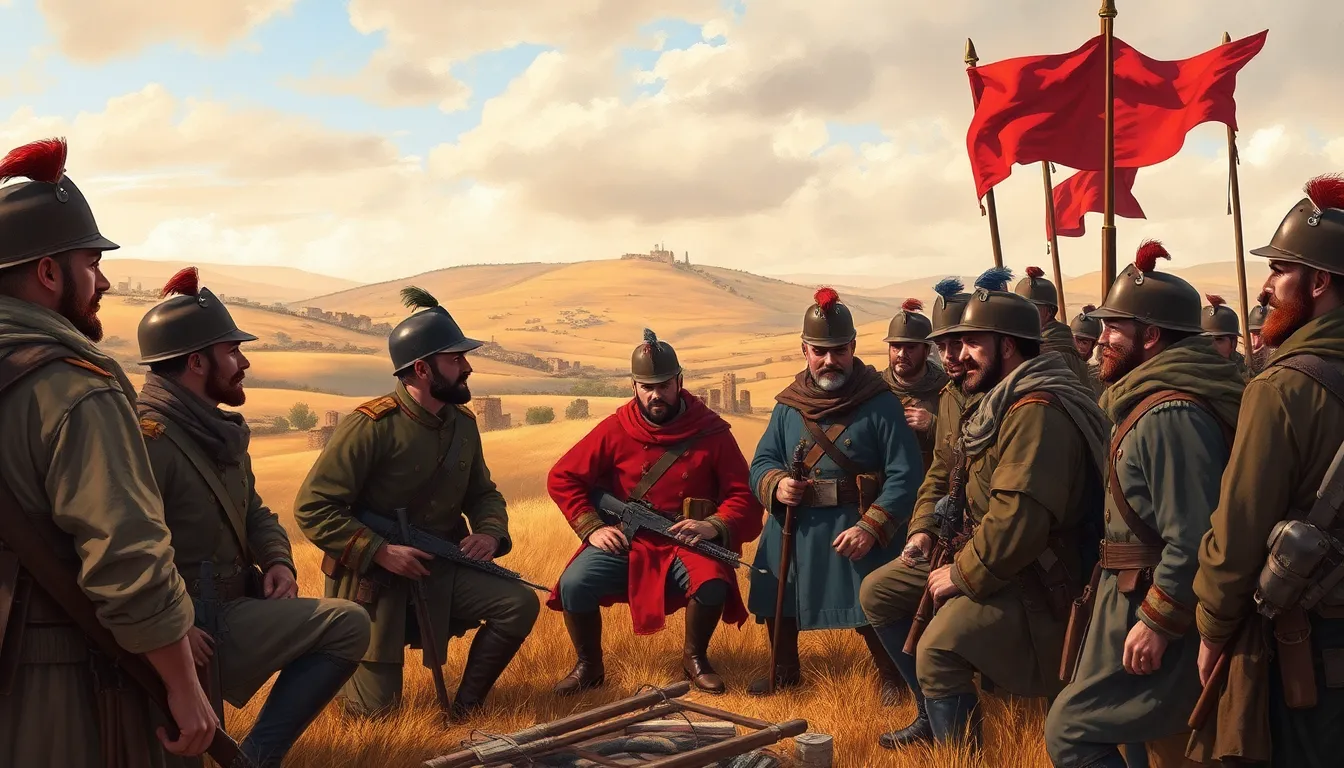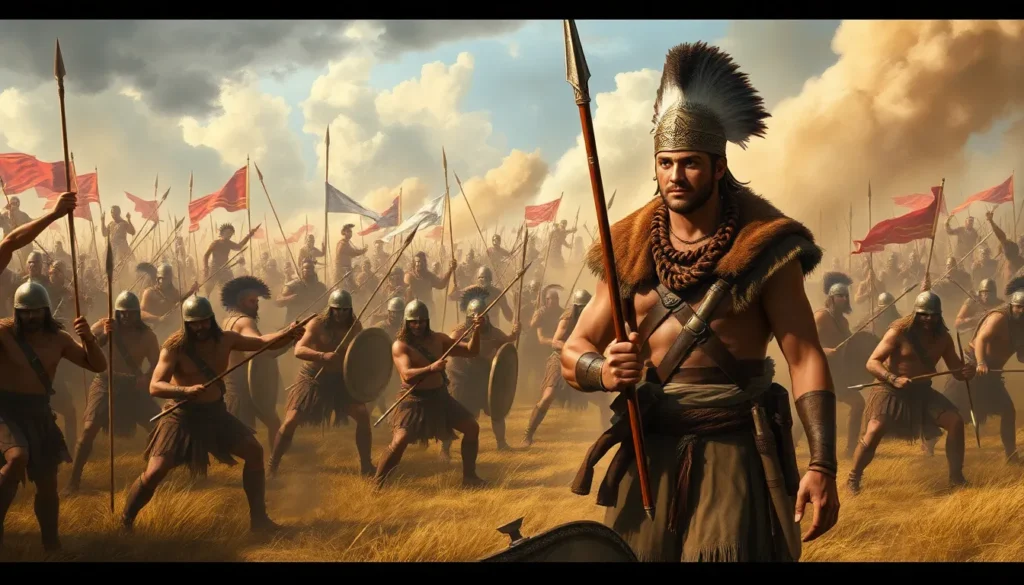In the grand saga of human history, the first battlefield stands as a stage where valor and strategy clashed in a dance as old as time. Imagine warriors donning their armor, wielding weapons, and strutting onto the field like it’s the ultimate reality show, complete with dramatic music and unexpected plot twists. This wasn’t just a fight; it was the original showdown that set the tone for countless conflicts to come.
Table of Contents
ToggleThe Concept of the First Battlefield
The first battlefield represents a crucial junction in human evolution. This location marked the initial clash between opposing forces, showcasing early tactics and strategies. Bravery became essential as warriors faced unprecedented odds in pursuit of victory.
Pivotal events unfolded during this battle, highlighting the importance of leadership and teamwork. Each participant contributed decisively, affecting the overall outcome and future military engagements.
Historical records indicate that the influences of the first battlefield lingered long after its conclusion. Lessons learned from this confrontation set the stage for the development of warfare strategies. Strategies evolved as cultures adopted and adapted these tactics to suit their needs.
In essence, the first battlefield serves as a symbol of human resilience and ingenuity. Anthropologists and historians emphasize its foundational role in establishing societal norms related to conflict. Each conflict that followed drew upon the experiences and lessons derived from this initial encounter, showcasing the battlefield’s lasting legacy.
Conflict zones often highlight the interplay between emotions and decisions made under pressure. Those involved in the first battlefield faced intense circumstances that tested their resolve. This combination of fear and courage became a theme repeated in subsequent conflicts throughout history.
Documenting these encounters provides insight into the evolving concept of warfare. Comparisons between ancient and modern battlefields offer perspectives on how human behavior in conflict has transformed. Ultimately, understanding the first battlefield lays the groundwork for recognizing the significance of all conflicts that followed.
Historical Significance of the First Battlefield

The first battlefield marked a turning point in human history, showcasing the intricacies of conflict management and strategy. Early engagements between opposing forces shaped not just military tactics but also societal structures.
Key Events and Battles
Major encounters defined the first battlefield’s legacy. Notable confrontations showcased innovative tactics, demonstrating early military organization. Each clash revealed unique approaches to combat, influencing future engagements and strategies. Significant events led to the emergence of leadership roles, underscoring the interplay between strategy and human resilience. This combination of experiences laid the groundwork for more complex military operations throughout history.
Influential Leaders and Figures
Remarkable leaders emerged during the first battlefield, their decisions shaping the outcomes of conflicts. Charismatic figures inspired troops with unwavering resolve. Noteworthy commanders adopted tactics that became foundational in military doctrine. Leadership examples highlighted the importance of vision and adaptability under pressure. The impact of these leaders transcended their time, informing later military leaders and strategies, thus solidifying their roles in the broader narrative of warfare.
The Evolution of Battlefield Tactics
The evolution of battlefield tactics stems from lessons learned on the first battlefield. Early confrontations laid the groundwork for strategic development in military engagements.
Strategies Used in the First Battlefield
Tactics employed during the first battlefield focused on direct confrontation. Warriors relied on formations that maximized their strengths while exploiting enemy weaknesses. Ambush strategies played a crucial role, often catching opponents off guard. Leaders emphasized communication among troops to maintain cohesion. Troop movements were planned to leverage terrain advantages, ensuring optimal positioning. Some armies utilized feigned retreats to lure enemies into traps, proving effective in shifting momentum.
Technological Advancements
Technological innovations marked a significant shift in military tactics on the first battlefield. Tools like the spear and later, the bow and arrow provided advantages in both range and striking power. These advancements allowed warriors to engage enemies from a distance before close combat began. Armor improvements also played a critical role in enhancing soldier protection. Innovations in transportation, such as chariots, allowed for quicker troop movements and surprise attacks. As these technologies evolved, their integration into strategy reshaped future battle dynamics.
Cultural Impact of the First Battlefield
The first battlefield serves as a foundation for understanding human conflict. Emphasis on bravery and strategy emerged during this initial confrontation. Early warriors faced fierce opposition, showcasing their resilience and innovative thinking.
Influences from this battlefield resonate through history, shaping military strategies across cultures. Lessons learned from the initial clash informed future engagements. Each subsequent battle recalled the tactics and teamwork developed in this moment.
Courage and fear intertwine in narratives of past conflicts, illustrating the emotional weight of decisions made under duress. This dynamic consistently reappears in later battles, reinforcing the psychological aspects of warfare. By documenting these events, historians reveal the shifting nature of conflict and its societal implications.
Leadership played a critical role on the first battlefield, with prominent figures inspiring troops and shaping military doctrine. Charismatic leaders emerged, guiding their forces through uncertainty. Their strategic insights influenced later military approaches, highlighting the impact of individual choices on broader outcomes.
Innovative tactics from this battlefield illustrate the evolution of warfare. Direct confrontations used formations to exploit enemy weaknesses. Ambush strategies emerged alongside advancements in communication, allowing troops to maintain cohesion under pressure.
Technological developments, such as the spear and bow, enhanced combat effectiveness. Improvements in armor and transportation transformed troop movements, enabling surprise attacks. Each advancement contributed to reshaping future battle dynamics, underscoring the first battlefield’s lasting legacy.
Lessons Learned from the First Battlefield
The first battlefield imparted crucial lessons that shaped military tactics and human behavior in conflict. Bravery emerged as a core principle, guiding warriors through their initial encounters. Each participant’s role highlighted the importance of teamwork, emphasizing how collective efforts influenced outcomes. Leaders who emerged during these early clashes demonstrated that effective leadership can inspire troops in daunting situations.
Tactics evolved as warriors adapted to encounters on the battlefield. Direct confrontation initially dominated, with formations designed to leverage strengths while exploiting enemy weaknesses. Ambush strategies and coordinated communication between troops became essential for maintaining unity. It’s clear that technological advances, like the spear and bow and arrow, altered the course of engagements by enhancing range and striking power.
Cultural impacts also stemmed from these early battles. Observations made on the battlefield created a foundation for understanding conflicts across various societies. Emotional dynamics, particularly those involving courage and fear, played a significant role in shaping narratives of warfare. Decisions made during intense situations regularly dictated the course of outcomes, underscoring the psychological dimensions of combat.
Additionally, innovation proved critical in developing military doctrine. Historical leaders influenced future strategies through their adaptability and vision. Transformative tactics observed during the first battlefield established a framework for subsequent engagements, providing insights into effective military organization. Each advancement contributed to reshaping combat effectiveness and establishing long-lasting legacies in warfare strategies.
The lessons from the first battlefield remain relevant, illuminating the complexities of human conflict and the enduring need for strategy and resilience.
The first battlefield stands as a monumental chapter in human history. Its lessons continue to resonate across time, shaping military strategies and societal norms. The interplay of bravery and strategy during this initial clash laid the groundwork for future conflicts, emphasizing the importance of leadership and teamwork.
Innovative tactics and emotional dynamics observed in this early confrontation have become integral to understanding warfare. The enduring legacy of the first battlefield serves not only as a testament to human resilience but also as a reminder of the complexities inherent in conflict. As history unfolds, the impact of those early encounters remains a vital part of the narrative of human struggle and achievement.








